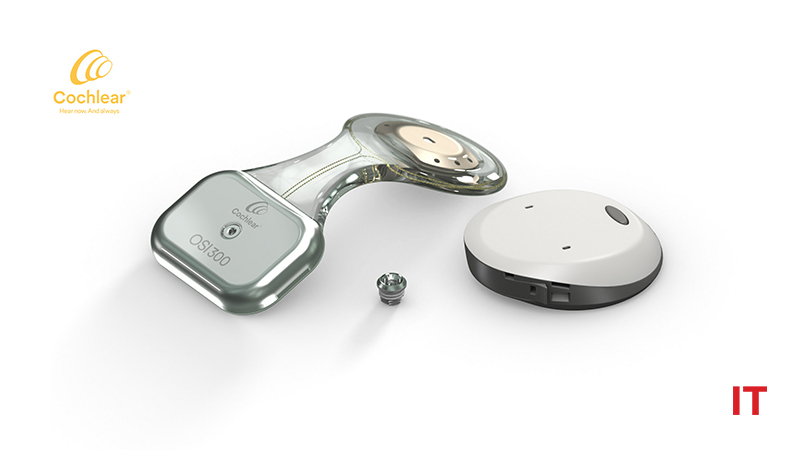Cochlear Limited, the global leader in implantable hearing solutions, introduces its next generation Cochlear Osia System with the ability to have an MRI at 3.0 T, designed to improve hearing outcomes for people with conductive hearing loss, mixed hearing loss and single-sided sensorineural deafness (SSD).
The new Osia System offers the proven benefits as the current version: excellent hearing outcomes1, ease of use, discreetness and reliability2. With the introduction of the OSI300 Implant, it is the first and only active bone conduction system that allows patients to undergo MRI scans at both 1.5 T and 3.0 T without the need for surgery3. This new patient benefit is made possible by combining the unique properties of the Osia System’s Piezo Power™ transducer, which does not contain magnetic material, and the next generation in implant magnet technology.
The OSI300 Implant is specifically designed to support access to MRI with no performance degradation after MRI exposure, as there is nothing to be demagnetized as in an electromagnetic transducer. Unlike an axial magnet, which is found in most bone conduction implants today and is unsuitable for a patient undergoing an MRI examination at 3.0 T, the OSI300 uses a diametric magnet that sits within a casing and rotates to align with the magnetic field of the MRI machine.
Also Read: Imperative Care Unveils New Structure to Elevate Care for Patients with Vascular Diseases
“Not only does the new design allow for MRI scans at 3.0 T without surgery or the need for a headwrap or splint kit; we have also designed the magnet cassette to be simple to remove if needed. The easy removal of the implant magnet reduces image artifact, an important consideration for maximum visibility of areas around the implant. Both features mean less MRI preparation time and less time without sound, which is beneficial to both recipients and professionals,” Ryan Lopez, Head of Portfolio Strategy & Professional Marketing at Cochlear, said.
Most people can expect to undergo an MRI scan at some point in their lifetime and having a hearing implant shouldn’t be an obstacle to this important healthcare treatment option.
“The use of 3.0 T scanners is increasing and becoming more common. 3.0 T scanners help in the proper diagnosis of many neurologic, orthopedic and oncology conditions. It is important that patients don’t face any obstacles to this type of care, and I am glad Cochlear has kept this in mind in their new Osia System,” Dr. Brian Kaplan, SVP, Global Clinical Strategy & Innovation at Cochlear, Chairman of the Department of Otolaryngology, and Director of the Cochlear Implant Program at the Greater Baltimore Medical Center, said.
SOURCE: PRNewswire

































